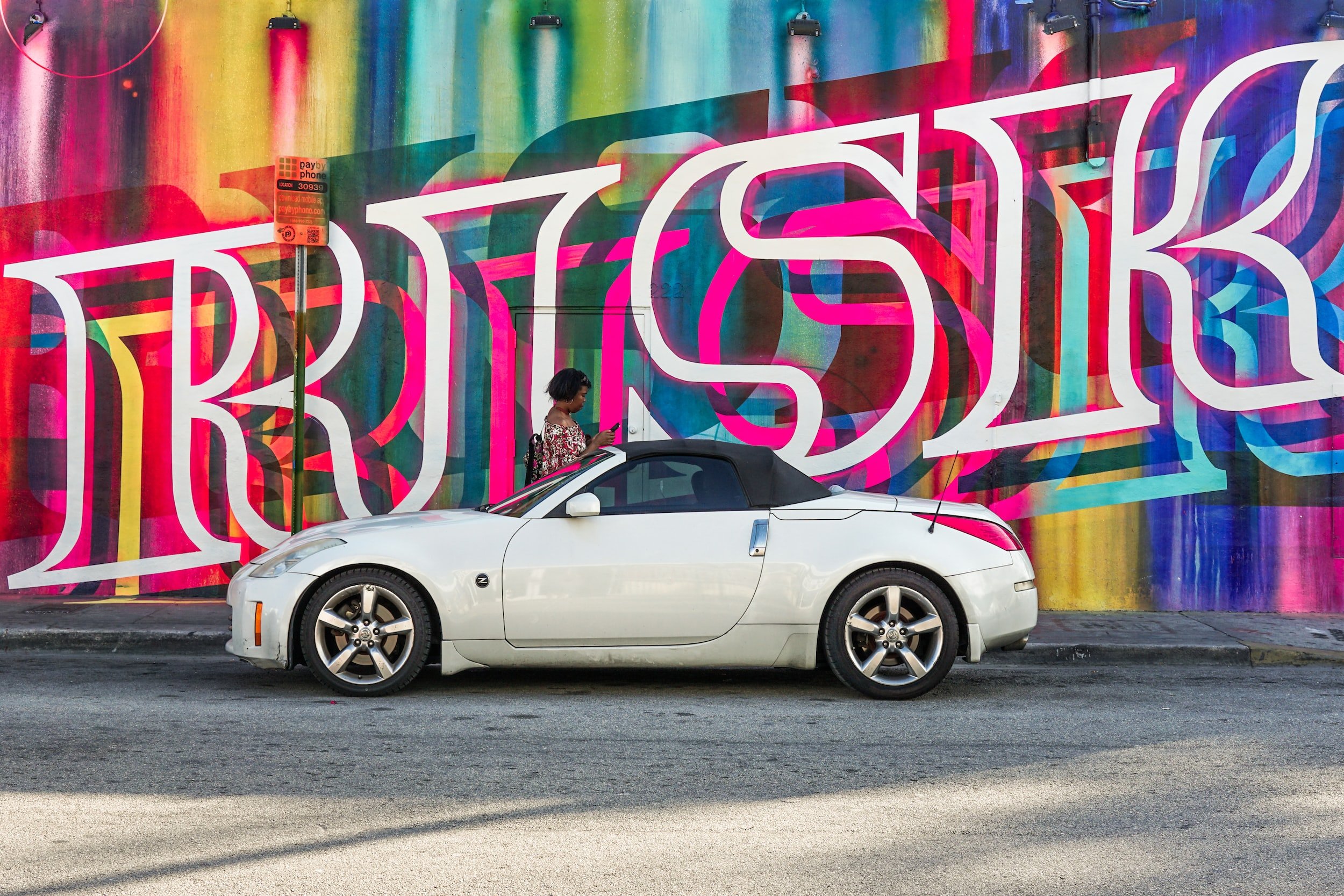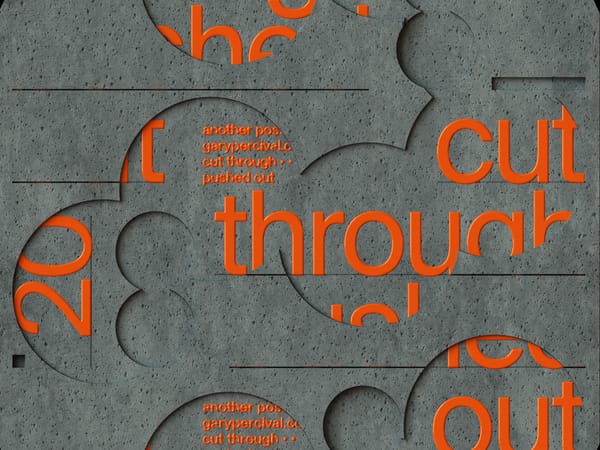Understanding the Risk of Being Too Creative
Creative thinking is one of the most invaluable assets a freelancer, graphic designer, or any type of creative can possess.

Creative thinking is one of the most invaluable assets a freelancer, graphic designer, or any type of creative can possess.
After all, creativity and innovation are key components of success. However, with endless possibilities come more risks. If you’re too creative, if you take ideas a bit too far, some potential clients may not be comfortable with what they see. How do you make sure that your work stands out in the best way possible while still staying within acceptable boundaries?
Understanding how to use creativity confidently and strategically is essential; read on to learn how to maximise your talent without overstepping its bounds!
What Does It Mean to Be Creative?
To be creative, we must embrace our innate curiosity, challenge conventional wisdom, and use a genuine desire to push boundaries.
Creativity is defined as the ability to generate new ideas and see solutions to problems that others may not have considered. It allows us to express ourselves in unique and meaningful ways while also encouraging open-minded problem-solving.
Creativity, at its core, entails taking risks, experimenting, and thinking outside the box. Creativity is based on the notion that there are multiple perspectives on a problem or situation. The goal is to develop a unique solution or outcome that makes use of novel approaches and techniques.
This frequently entails combining previously unrelated ideas and knowledge in novel ways or making unexpected connections between seemingly unrelated concepts.
To be creative, one must be willing to take risks, venture into uncharted territory, accept failure as a necessary part of the learning process, and embrace spontaneity. Creative people must also be self-aware—they must recognise their own strengths and weaknesses, as well as their personal preferences in terms of work style. They also require discipline—the ability to focus on the task at hand in the face of distractions.
Finally, creative people require a certain amount of courage—the courage to pursue ideas in the face of possible criticism or rejection from others.
Risk-taking can be frightening, but it is necessary for creativity. Taking risks takes us into unfamiliar territory, which can lead to unexpected outcomes that are far more rewarding in the long run. However, it's important to remember that being too creative can lead to failure if the risk is too great or the idea isn't objectively sound.
As a result, being aware of the potential risks associated with being overly creative is critical for success when engaging in creative endeavours.

What Is the Risk of Being Too Creative?
Creativity requires taking risks, which can lead to failure and disappointment.
When attempting something new, it is important to weigh the pros and cons of the situation and decide whether the risk is worth it. Creative people may also find themselves in a state of confusion or doubt as they strive to come up with unique ways of expressing their ideas. This could cause mental fatigue, stress, and anxiety due to the pressure of having to constantly invent something new.
It can be difficult for creative individuals to know when enough is enough; they may find themselves overthinking every decision they make in order to produce something that stands out from the crowd.
In addition, creativity can take a toll on a person’s productivity due to the amount of time spent trying out new ideas or tinkering with existing ones. This could result in an imbalance between work and play, leading to feelings of burnout or exhaustion if proper care isn’t taken. Moreover, creative types may feel overwhelmed by criticism from others who don't understand their vision or reject their creations.
This could be especially damaging for people who rely on feedback from others in order to grow and improve their craft.
Ultimately, there is a risk associated with being too creative: failure. There are no guarantees that any idea will succeed—even if it seems like a great idea at first—which means that creators should always be prepared for potential pitfalls along the way. However, this shouldn’t discourage anyone from exploring their own ideas and pushing boundaries; creativity can lead to amazing breakthroughs that benefit society in unique ways.
The key is being aware of the risks involved and staying mindful of one's own limitations so that failure doesn’t become an obstacle to success in the long run.

How to Balance Creativity and Practicality in Project Outcomes
Creativity and practicality are two essential components of any successful project.
It is important to ensure that these two elements remain balanced in order to achieve the desired outcome. In order to maintain this balance, it is important to understand the risk that comes with being too creative.
Too much creativity often results in ideas that do not take into account the practicalities or limitations of the project. This can lead to time wasted on developing ideas that cannot be implemented or have no real use in the final product. Instead, creativity should be used as a means of enhancing or improving upon existing solutions rather than coming up with entirely new ones every time.
On the other hand, being overly practical can lead to an uninspiring product with limited potential for growth. Ideas must be tested and pushed out of their comfort zones in order to reach their full potential and make a lasting impact. Too little creativity may mean sacrificing innovation and therefore failing to create something truly unique that stands out from its competitors.
The key lies in understanding how much creativity is enough without overstepping the boundaries of what is practically possible within a given framework or budget. This requires careful consideration of all aspects, such as design, user experience, customer feedback, target audience, etc., before making any decisions about what direction to take during the production process. It's not always easy, but taking risks when necessary can result in truly novel products that offer more value than customers expect.
In short, it's important to find a balance between creativity and practicality if you want to finish a project successfully and avoid making expensive mistakes along the way. By carefully weighing both factors and adding new, innovative ideas to projects in small steps, you can get a good return on your investment while also making something truly unique, innovative, but also feasible and successful.

Understanding the Potential Benefits of Taking Risks in Your Projects
When you're willing to take risks, you open yourself up to new opportunities and possibilities. Whether it's trying out a new approach, taking on a challenging project, or simply approaching a problem in a different way, taking risks can ignite creativity and innovation in your projects.
Additionally, taking risks can help you grow as a professional, build confidence, and enhance your ability to make sound decisions in the face of uncertainty. While the fear of failure may hold you back, the potential rewards of taking risks are worth it in the end.
However, it's important to remember that not all risks are created equal. It's essential to assess the potential rewards and consequences of taking a risk and deciding whether or not it is the right move for you and your project. If you take too large of a risk without proper planning or consideration, you could find yourself in an even more difficult situation.

Recognising Warning Signs That Your Creative Ideas May Not Be Practical
It's not always easy to differentiate between a brilliant and impractical idea, especially when it comes to creative ventures.
However, recognising the warning signs that your creative ideas may not be practical is key to avoiding wasted time and resources. One of the most significant red flags is when a project lacks clarity or purpose. If you find yourself struggling to articulate the goal or end product of your idea, it may be best to put it on hold until you can define a clear direction forward.
Another warning sign is when your idea requires too much investment or time to execute, potentially putting a strain on your other responsibilities.
Keep these signs in mind as you pursue your creative vision, and remember that not all ideas are meant to be pursued. By taking the time to evaluate whether your creative ideas are feasible, you can save yourself from unproductive or costly endeavours.
Remember: being creative is great, but understanding the risk of being too creative is even better. Take the time to assess each idea and determine whether it's worth pursuing before investing any resources. Doing so will ensure that your creativity yields meaningful results.
Understanding Your Creative Limit to Avoid Unfortunate Results
Creativity is a trait that is highly valued in every field, be it a creative pursuit or a more structured profession.
When we allow ourselves to be creative, we open up a world of possibilities, enabling us to break free from conventional thinking and come up with innovative solutions. However, in our eagerness to be creative, we often overlook the fact that creativity has its limits. When we cross these limits and extend ourselves beyond our creative boundaries, we risk producing results that are unfortunate and unprofessional.
Therefore, it is important to understand our creative limits and work within those boundaries to avoid any unfortunate outcomes.
By knowing our limits, we can channel our creativity more effectively to achieve the best possible outcomes. At the same time, understanding our creative boundaries will help us make more informed decisions when it comes to problem-solving. We can identify important aspects of a project and prioritise them accordingly, instead of taking on too much and endangering the success of our efforts.
It is also important to remember that creativity is not only about coming up with new ideas; it’s also about refining and polishing existing ones. Through analysis and experimentation, we can work through existing concepts or projects until they achieve the desired level of excellence.

Preparing for Unforeseen Consequences of Taking Risks
When taking risks, we often focus on the potential rewards and forget about the possibility of unforeseen consequences.
It's essential to prepare for these outcomes, just as much as we plan for success. We must consider scenarios that may arise and develop strategies to navigate them. Whether it's a new business venture, a personal investment or relationship, or pushing ourselves out of our comfort zone, there are always risks involved. But by acknowledging the potential for unforeseen consequences and planning ahead, we can minimise their impact and move forward with confidence.
Embracing the uncertainty of taking risks is necessary for growth and success, but being prepared for any outcome can give us the edge we need to succeed.
In conclusion, it’s vital to weigh the risks and benefits of creativity in workplace projects. While creative ideas can help us further our goals and uncover new possibilities, the potential for negative results should also be taken into consideration. There are a few key things to keep in mind when considering whether or not to take a risk: set clear objectives, identify what steps need to be taken to reach those objectives, and prepare for unforeseen consequences.
Understanding the implications of being too creative is an essential part of managing projects successfully and ensuring positive outcomes.



